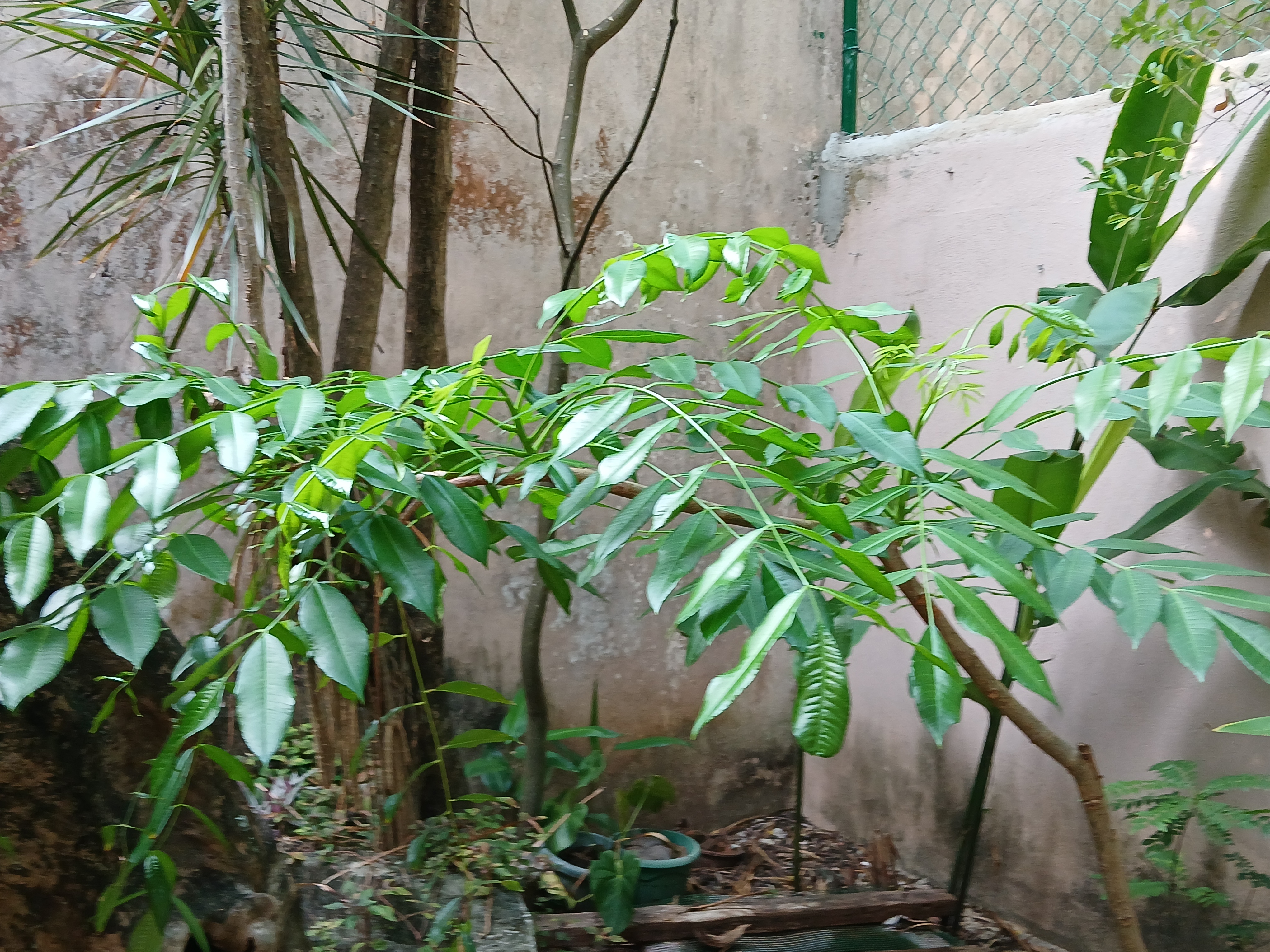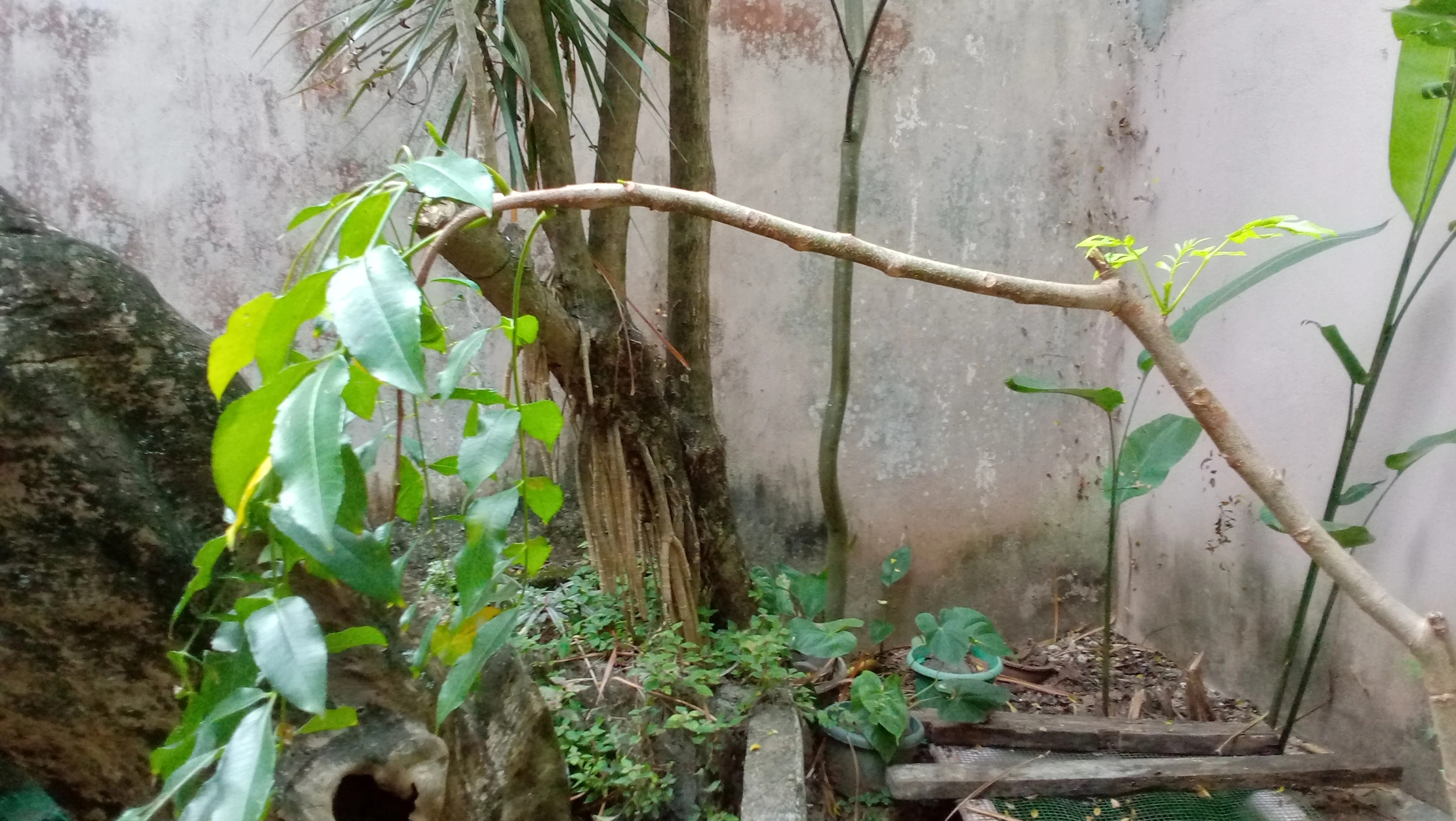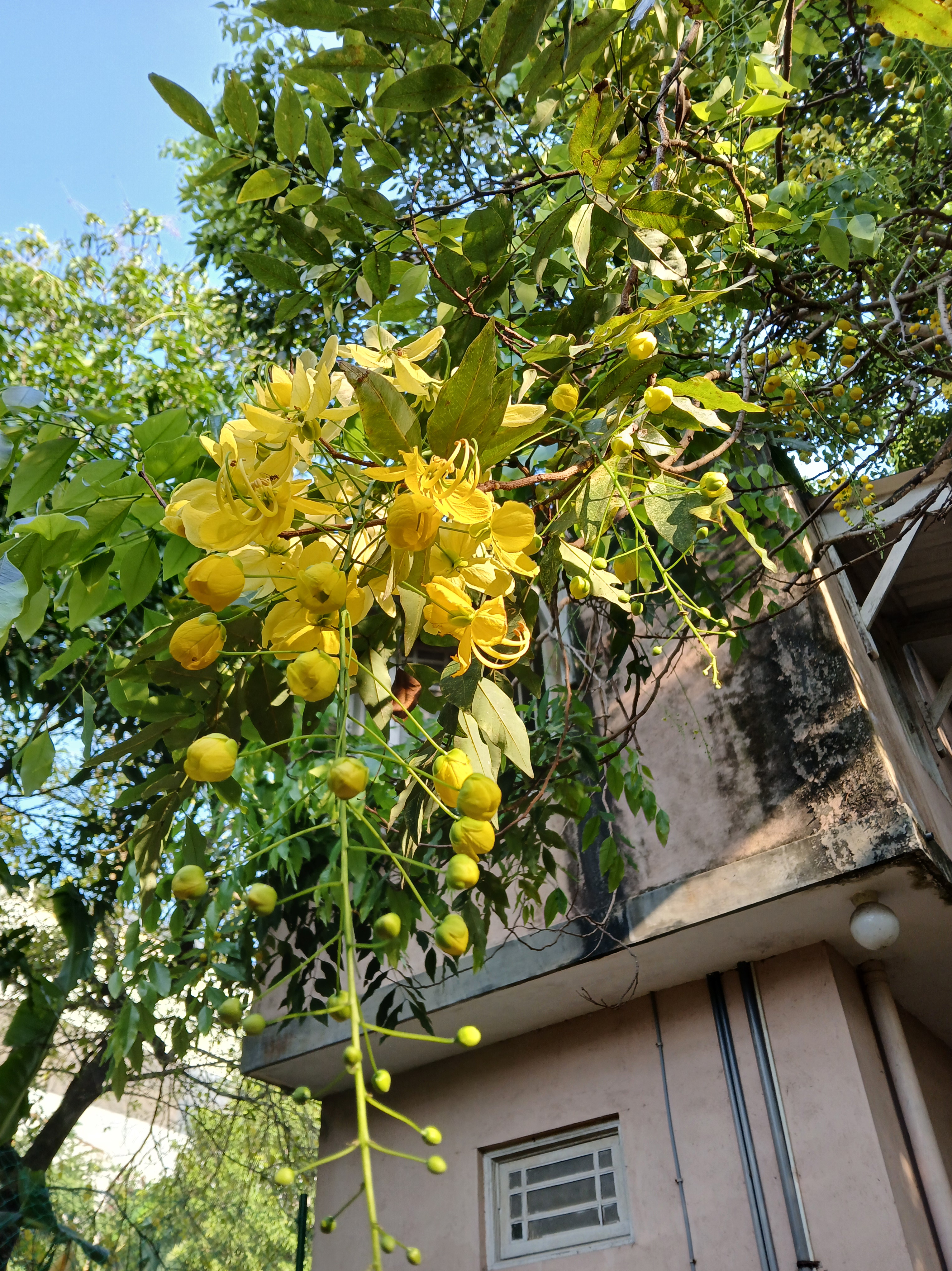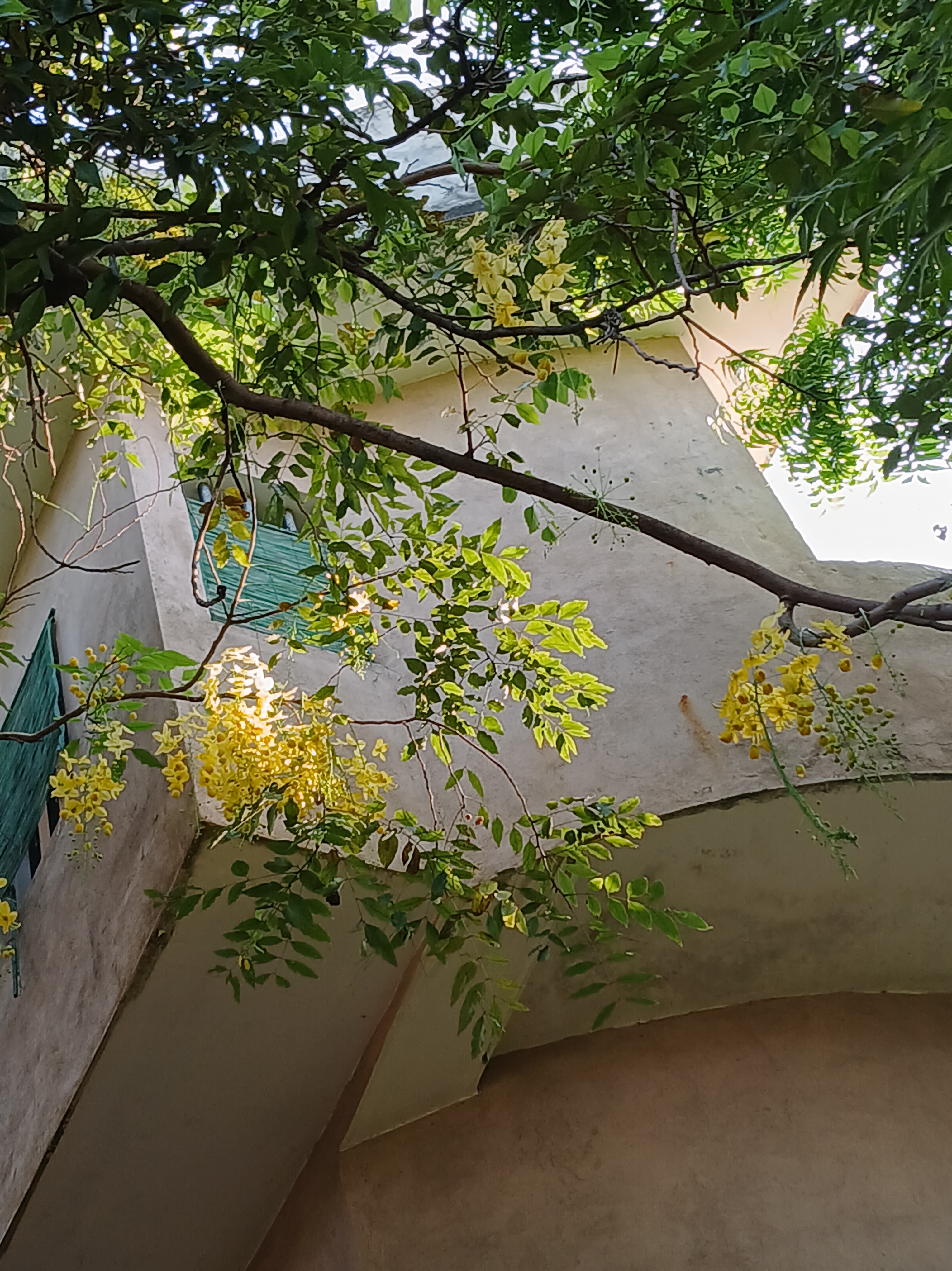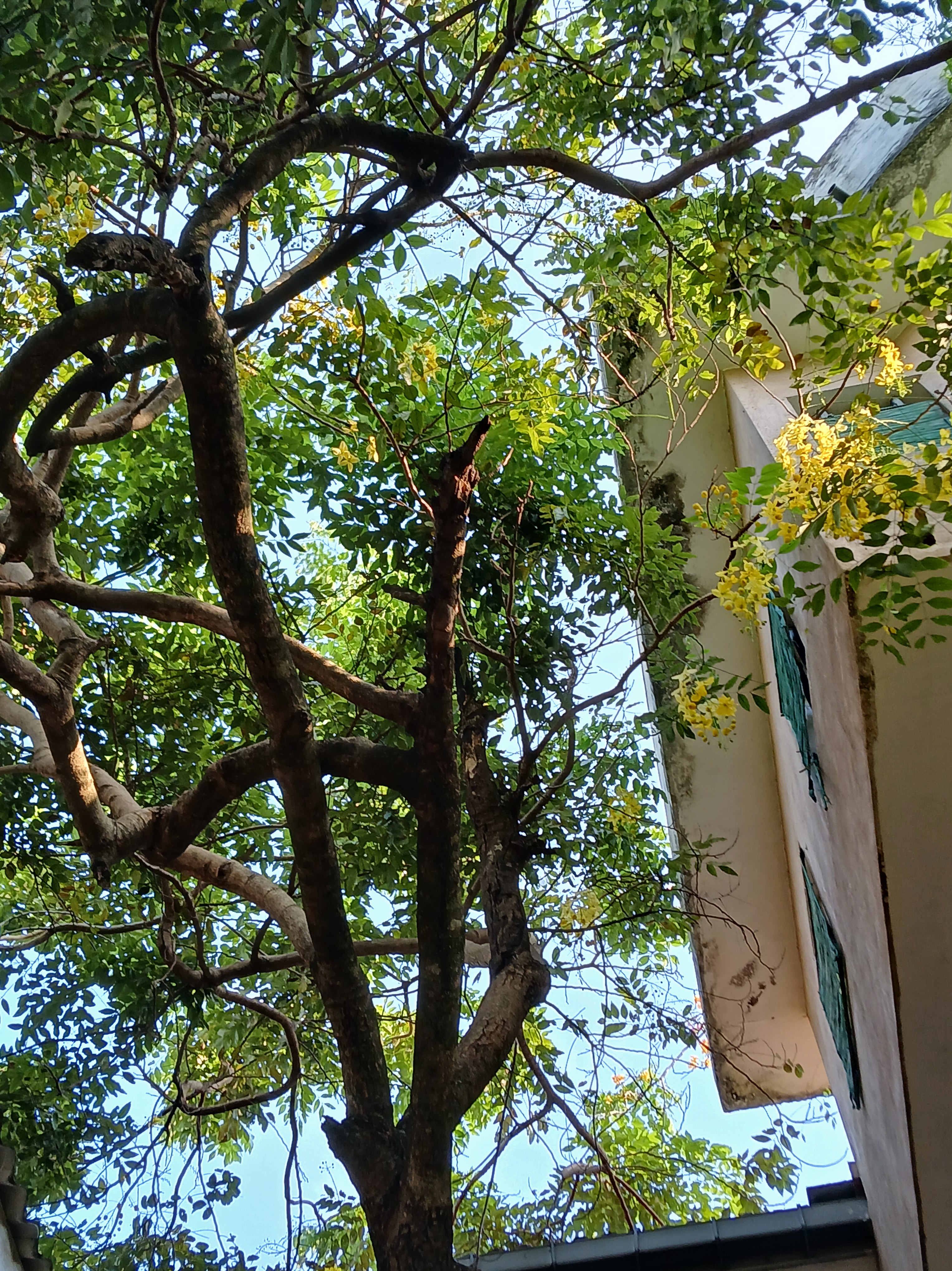The yellow bath tub, from the downstairs bathroom at Lakmahal, which I wrote about last week is against the east wall of my little walled garden. At right angles to it, just outside the porch which leads to my drawing room, is the second bath tub which Nirmali gave me during the time of coronavirus, a green one which is beneath the croton bush, or rather tree, which is in the porch, peering out from the front in search of sun.
That pond is well protected, so I fear that there will be lots of netting too when I try to show the fish. Dominating it in terms of colour are the Malavi, as I still think of the white fish which began spawning in December 2022 in the waterfall pond. There were so many of them then that we moved some to this pond and some to the pond round the dead temple flower tree, against the south wall as is the waterfall pond.
Those put in there also spawned, perhaps because one of the pair I had put there, when the other pair I had spawned, was still around. And there they spawned again and again and kept most of the youngsters alive, unlike in the waterfall pond where there were two more sets of little ones though only one or two survived of those.
The four put in the croton pond grew larger and larger, though they never spawned, and a few more were added there so there seem to be about half a dozen in place. The other fish there are much smaller, several black mollies, and then guppies and platies. But my pride is a tiger barb, which I had forgotten putting there soon after that pond was commissioned. There were a pair, and they would lurk at the bottom, but suddenly a few months back I saw one flash up for food, and then the other did too.
So I knew there were two of them, but then a couple of months back one of them died. The other however continues to dart up, and I did manage to get a decent picture of him, which I show first here. You see him on the left, pirouetting downward, with a black molly by him and lots of guppies around. Then there was another, not so good, where you see him again on the left, this time with a plethora of platies, while next to him, from the brilliant tail, is I think a sari guppy. And a third one shows him above a black molly with a platy below, a delightful range of colour, with something pinkish or possibly white towards the right, which could be a smaller Malavi.
Oddly enough there are no Malavi in the first two pictures, but you see four of them in the fourth one, with some platies, and one in the last juxtaposed against a black molly. These I should note also multiplied from just one or two pairs which I got initially, though they did not need to dramatize the protection of their young as angels and Malavis do.





And of course I need not talk about the way platies, a few pairs of which I got initially, and guppies, which arrived unannounced in the mud I got initially for the lotuses, multiply ceaselessly.




































